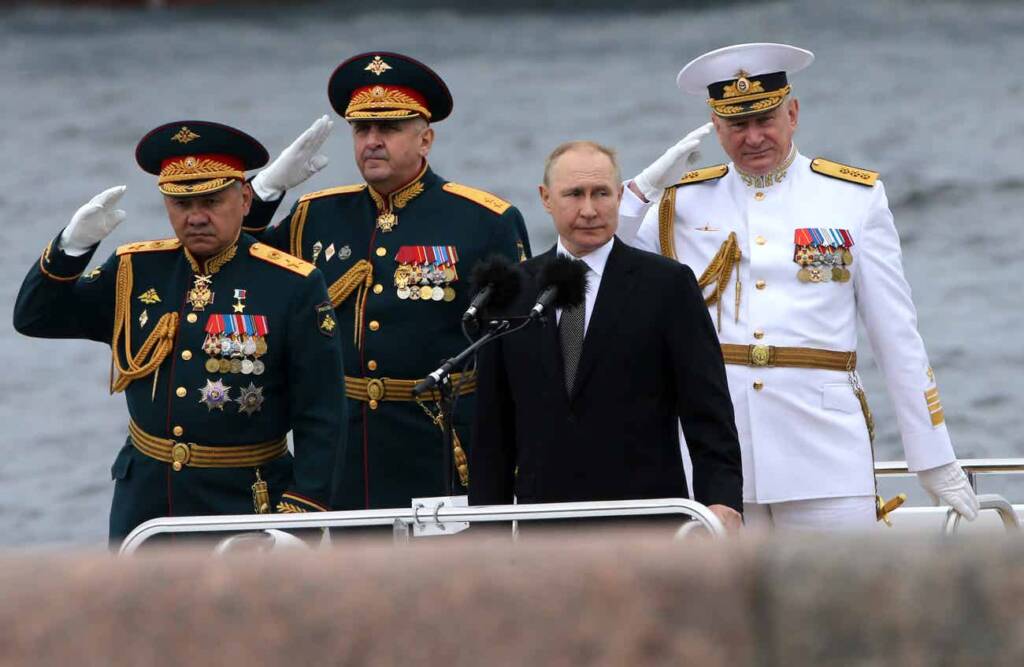Russian President Vladimir Putin has announced that Russian forces have seized nearly 5,000 square kilometres of Ukrainian territory so far this year, marking what he describes as a shift in momentum firmly in Moscow’s favor. The statement comes as the war, now in its fourth year, enters yet another intense phase, with both sides bracing for a protracted struggle across an extensive 1,250 km (775 mile) front line.
Speaking during a meeting with military leaders in Saint Petersburg on his 73rd birthday, Putin outlined Russia’s battlefield advances as a sign that its long-term strategy in Ukraine is bearing fruit.
“This year alone, 4,900 square kilometers of territory have come under our control. That includes 212 populated areas,” Putin said. “Our forces are advancing along the entire line of contact.”
His remarks were accompanied by fresh reports from the Russian Ministry of Defence, confirming the capture of two additional villages in eastern Ukraine. The claims have been widely publicized across Russian media, portraying a narrative of growing dominance and slow but steady progress.
What Is Putin Claiming?
Putin’s messaging has shifted in recent months from defending Russian-speaking regions to broader strategic aims. In this latest announcement, the Russian president presented three key themes:
Territorial Gains
The nearly 5,000 km² of claimed territory represents, according to Moscow, a tangible expansion of control since the start of 2025. These gains reportedly span parts of the Donetsk, Luhansk, and Kharkiv regions.
Strategic Initiative
Putin emphasized that Russia now holds the “initiative,” suggesting that Ukrainian forces are on the defensive and struggling to maintain their positions across a vast front.
Domestic Unity and Military Confidence
His statements coincided with morale-boosting visits to Russian military commands and highlighted the importance of unity, sacrifice, and long-term resolve — a message likely aimed at both Russian citizens and troops.
What Are Putin’s Aims Now?
While the Kremlin’s goals have evolved since the initial invasion in 2022, several long-term objectives remain apparent based on public speeches and official statements:
Secure Control of Eastern Ukraine
The consistent focus on Donetsk and Luhansk regions — now referred to by Moscow as “liberated territories” — shows Russia’s intention to formalize control over areas it annexed in 2022 but never fully occupied.
Erode Ukraine’s Sovereignty and NATO Aspirations
Putin continues to oppose Ukraine’s Western alignment, viewing it as a direct threat. His strategy appears aimed at forcing Kyiv into a position where Western support becomes politically or militarily unsustainable.
Attritional Warfare as Leverage
Russia is pursuing a slow, grinding war of attrition, betting that Ukraine’s infrastructure, economy, and population will face exhaustion — while international attention shifts elsewhere.
Redrawing Post-Soviet Borders
Increasingly, Russian officials speak in civilizational terms — not just reclaiming territory, but reshaping the regional order and weakening Western influence in Eastern Europe.
What Does This Mean for Ukraine’s Future?
Ukraine faces enormous challenges as the war stretches toward its fourth winter:
1. Military Pressure Across a Massive Front
With a front line over 1,200 km long, Ukrainian forces are thinly stretched. Even small tactical setbacks — like the loss of villages or rural sectors — can strain logistics and morale. Russia’s slow but steady pressure threatens to create vulnerabilities in Ukraine’s defenses, especially if Western military aid slows down.
2. Economic Strain and Civilian Fatigue
Ukraine’s economy has survived thanks to foreign aid and wartime resilience, but the human and financial cost is staggering. Cities remain under periodic missile attacks, infrastructure is worn down, and millions of Ukrainians remain displaced or abroad.
3. Political Crossroads
While President Volodymyr Zelenskyy remains widely supported at home, political fatigue is growing — both in Ukraine and among its allies. Ukraine’s long-term survival may depend not only on battlefield outcomes, but on how effectively it can navigate Western politics and maintain support from Europe and the United States heading into 2026.
4. A Future in the West or in Limbo?
Ukraine’s hopes of joining NATO or the European Union remain strong in principle but uncertain in practice. As long as war continues, most Western powers are unlikely to admit Ukraine into NATO, and EU membership may take years, even under fast-tracked reforms.
If Russia succeeds in carving out and holding a permanent buffer zone in the east, Ukraine may be forced to face a future where parts of its territory remain indefinitely under occupation or dispute — creating a situation not unlike Moldova’s Transnistria or Georgia’s South Ossetia.
Putin’s recent statements show that Russia believes time is on its side — that gradual territorial expansion, sustained military pressure, and strategic patience will eventually wear down Ukraine and fracture Western unity. Whether this proves true depends not just on battlefield results, but on how long Ukraine’s supporters are willing — and able — to stand behind it.
